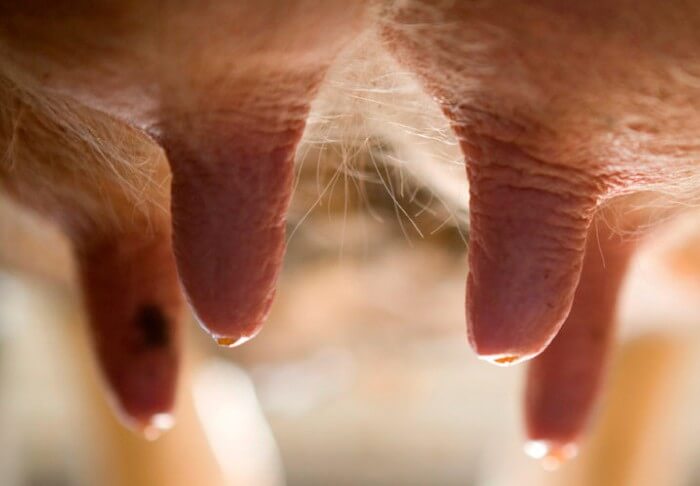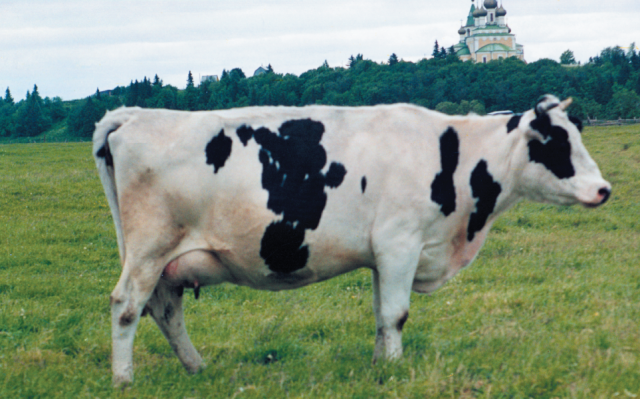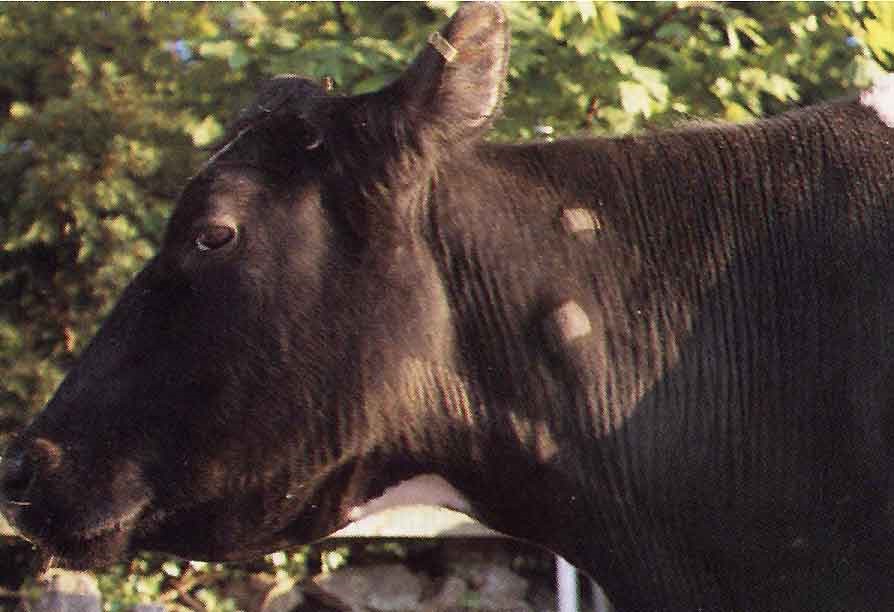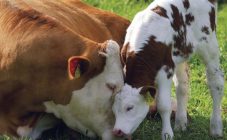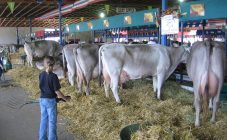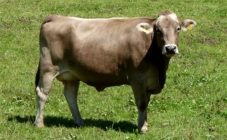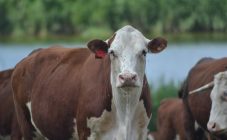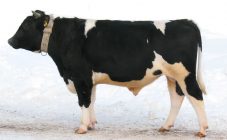Content:
For centuries, cattle breeding in private farmsteads and on an industrial scale has been engaged in. From these animals, meat, milk, by-products (wool, leather, etc.) are obtained. Cows are most often bred for their high milk productivity, but bulls are most often raised for up to a year for meat, and in large herds, leaving some of them to reproduce offspring. The Kholmogory breed of cows is one of the best and oldest dairy cattle bred by Russian breeders.
Description of the Kholmogory breed of cows
For the first time about this breed, which appeared in the Arkhangelsk region, they started talking in the 18th century, calling it the homeland of the Kholmogorsk region. These cows have been raised mainly on pastures for several centuries.
It is believed that her ancestors were cows, which were brought to Arkhangelsk by water traders from European countries. As a result of crossing the Dutch and Holstein breeds with local cows, a new one was obtained, which was named Kholmogory. As a result, the newly-made variety has the following positive qualities:
- high milk productivity;
- endurance;
- unpretentiousness to conditions of detention and care.
Despite the fact that the Kholmogory people were bred several centuries ago, they were officially entered into the State Register of Russia only in 1937. Until now, work is underway to improve the basic qualities of this dairy breed of cows. Today in Russia this species is one of the most demanded.
There are several varieties of this breed:
- Pechora (bred in the Komi Republic);
- northern (habitat - Arkhangelsk region);
- central (contained in the territory of the Moscow region).
In contrast to the breeds of beef cows, the Kholmogory cow has a well-developed udder of a regular cup-shaped medium size with cylindrical teats. Their length can be up to 9 cm. Nipples in different individuals are located either close to each other, or widely spaced. The udder lobes are well developed.
Representatives of this cattle have the following characteristics:
- the body is elongated;
- limbs are long, strong, positioned correctly;
- the back is straight, the sacrum in these animals is slightly raised above the back;
- the chest is not wide, deep enough;
- the ass is well developed.
The main feature of the Kholmogory cows is the black and white color of the body, although there are other colors of these animals that are not non-standard:
- red and white;
- black;
- red.
Characteristics of the Kholmogory breed
In the Kholmogory breed of cows, the main characteristics relate to their size and milk production. The adults of this breed are quite large. Their height at the withers reaches 1.3 m, and the Kholmogory bulls are slightly higher than the females. The average weight of an adult cow reaches 450-500 kg. Kholmogory bulls weigh from 750 to 840 kg, adult Kholmogory bulls are on average more than a ton.A distinctive feature of these representatives of cattle is the fact that even two-day-old kholmogory calves already weigh at least 30 kg, and individual specimens can weigh about 36 kg.
With proper feeding and good housing conditions, calves of this breed quickly gain weight, and their muscles become stronger. Heifers weigh up to 180 kg by six months, and bulls - up to 210 kg. At 1.5 years old, Kholmogory bulls are already gaining weight up to 390-410 kg.
Adult cows, if they are healthy, give about 4000 liters of milk with good taste per year. If you follow all the rules for keeping these cows, correctly formulate the diet, then you can increase the amount of milk yield to 6000 liters. Famous Kholmogory record holders usually receive at least 9800 liters of milk.
According to the indicators, the milk of such cows contains:
- not less than 3.8% fat;
- the percentage of protein is about 3.6%.
Although this breed is considered dairy, the percentage of meat yield during slaughter from representatives of Kholmogory individuals has average indicators:
- from cows receive up to 55-60% of meat products;
- in bulls, this indicator is higher and is up to 65-67% by one and a half years.
Breeding and general rules of home care
When breeding this breed, it should be remembered that their maintenance does not differ from caring for other breeds of cows. Keep the barn warm and dry. Also, it should be large enough, since the adult Kholmogory cattle are impressive in size. These requirements must be met in order to have healthy cows. An important role is played by a balanced diet, which guarantees high milk yields in cows and regular weight gain in young animals.
Scientists have found that Kholmogory cows increase milk yield if they are switched from 3 milking times to 2 milking times - in the morning and in the evening. In this case, the speed of milk delivery increases, as well as its cost price decreases.
Since the appearance of green grass in pastures, it is recommended to send this breed to grazing, which will significantly reduce farmers' feed costs.
Kholmogorki have high immunity, so they are not very susceptible to most diseases. Since these animals are well tempered and adapted to life in cold climates, they are practically not susceptible to colds. It is extremely rare to observe the following diseases in them:
- tuberculosis;
- rheumatism;
- various diseases of the udder.
High resistance in these animals to leukemia, and the disease is not terrible and hybrids (a cross between the Kholmogory and Holstein breeds).
Disadvantages and advantages of the breed
The main advantages of this dairy cow breed include:
- high growth rate and weight gain;
- good fertility;
- high endurance;
- animals are practically immune to changes in weather conditions;
- unpretentiousness to growing conditions, diet;
- on pastures with a sufficient amount of green fodder, they quickly gain weight;
- high vitality, including in newborn calves (their survival rate is close to 100%);
- mating in heifers begins at the age of one;
- the productivity of cows continues for a long time;
- high resistance to most diseases typical for this cattle (including colds).
Representatives of this breed have no serious shortcomings. But experts note that sometimes cows have calves with small deviations from the standard:
- crooked limbs;
- small chest;
- the back part is not wide enough.
When grazing on poor pastures, cows reduce productivity. In most Russian regions, a hybrid is grown, obtained from Kholmogory cows and Holstein bulls. Such individuals have higher milk yields, but at the same time they are more demanding on the diet.
Advice and guidance from experienced breeders and veterinarians
Experienced breeders celebratethat it is necessary to monitor the calves from the moment of their birth, because among the young there may be specimens with deviations from the breed standard. In this case, if these calves are slowly gaining weight and are often sick, it is recommended to slaughter them.
- It is recommended to feed gobies of the Kholmogory breed until about one year of age (with further slaughter).
- It should also be borne in mind that hybrid cows to increase milk yield require higher quality feed than ordinary hill hills.
Kholmogork can be found in many Russian regions. This breed is also popular with farmers in Ukraine, Moldova and a number of other countries. It is not difficult to grow such cows and it is economically profitable, so the increased demand for this breed is quite justified.
